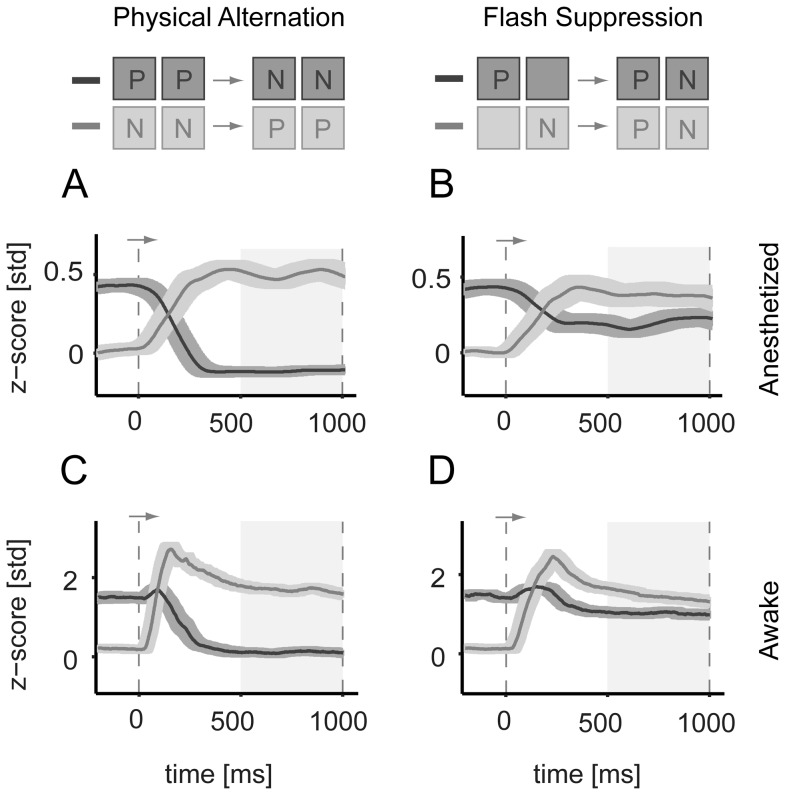Figure 3. Population responses of neurons during physical alternation and binocular flash suppression conditions in anesthetized (A,B) and awake (C,D) monkeys.
Different conditions are depicted on top of the panels with corresponding shaded outlines as the spike density functions below. Eyes are presented with preferred (P) and non-preferred (N) stimuli. Left group on the top are the two conditions of physical alternation and rightward the two flash suppression conditions eliciting the same perceptual sequence. (A) Population activity in z-scores during physical alternation conditions and (B) during binocular flash suppression in anesthetized monkey for all visually responsive multi-units (N = 31) in anesthetized experiments. Prior to averaging, conditions were sorted to preferred (P) and non-preferred (N) according to the responses during the monocular presentation. (C,D) the same as A and B, but in awake passively fixating monkeys. In all four panels, dark lines represent the responses to the preferred stimulus followed by non-preferred stimulus after the flash. Lighter gray lines represent the responses to the non-preferred stimulus first followed by the responses to the preferred in the second period. The shaded areas around the lines represent SEM across sites. Time zero was defined to be the time of the flash or switch of the stimuli.

